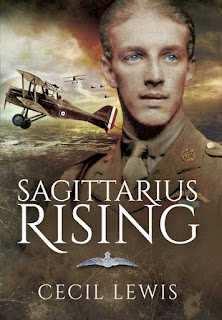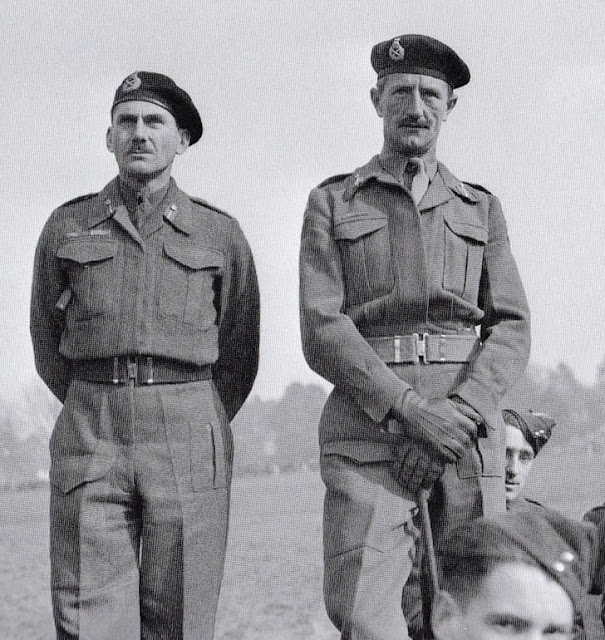First off I have to admit I'm a WWI obsessive. This probably doesn't come as much of a surprise to those who know me. I've always had an interest in the Great War for as long as I can remember, more so even than WWII. Though at some point this interest crossed a line and I freely admit now borders on an obsession. I think it was when I first watched the film Regeneration, which had quite an impact on me. From then on, I devoured memoir after memoir, which to this day is still the case. So you can imagine I've a pretty fair sized library of WWI books, which will probably continue to grow long into the future.

As just mentioned, I've read a lot of memoirs. Though most deal with the War on the land, I have read a few written by those who fought the War in the air. I think air warfare during WWI is fascinating. More so than in later wars, as we are dealing with the birth of war in the skies, in machines that had only recently managed to get man airborne. So, you were more likely to be killed just trying to fly the thing or due to some sort of failure than actual enemy action. Yet all nations never had any problems recruiting young men (boys to be honest) to go through the Russian roulette of training and then, with just a few hours solo under their belt, off into the skies above France or wherever it was they had been posted to. Life expectancy was low and could drop a lot lower depending on the role of the plane and plane type you had been assigned to. God help you if you had been assigned to a Be2C Recon plane during April '17 for instance. Even if assigned to a fighter squadron, your chances weren't great of getting past three weeks, though being assigned to a squadron like 56 Squadron which was full of great pilots would increase your life expectancy, a bit.
You'll find the pilots in the RFC would have come from a public school, though many had first served in the trenches and maybe came from a prestigious regiment like the Guards, though this was not always the case, as during the rush to enlist many public school boys joined whichever regiment would get to France first. One of the requisites the recruiters were looking for at the start of the RFC, apart from youth, was the ability to ride a horse, showing how little really was known about flying and what would make a good pilot! Yet you'll find it was a certain type of person that volunteered to be a pilot. You'll come across extroverts, rebels, risk takers, adventure seekers, all extremely confident young men, when you start reading about the RFC. Though stress may eventually take its toll on those traits, for the most part the pilots are as interesting to read about as the machines they flew and died in. The author of this particular book is no exception to the rule. Well educated, proud, loyal, witty, determined, confident, aloof, eccentric and with a great turn of phrase (you can add fatalistic to that as the War went on, a trait most pilots gained at some point, if they lived long enough. Usually shown through, what today we call, a dark sense of humour). The book is so good because the author was not only a pilot but also a brilliant writer. A reason many Officer accounts are such great reads is due to the high standard of education they had been through.

Wind in the Wires is a great read. Easily up there with the other classics like Cecil Lewis' Sagittarius Rising. Though Grinnell-Milne wasn't in such a famous squadron as 56 squadron, which Cecil Lewis flew in, doesn't detract from the memoir at all. In fact, his training and first deployment early on in the War was being assigned to a recon squadron. I found this extremely interesting, as usually you'll find most memoirs come from fighter pilots and cover mid to late war. So it was a refreshing change to read about what was the beginning of the RFC, and what it was like to be in a Recon squadron around this time. As you'll find out, it wasn't exactly how you'd have imagined. The squadron was definitely not a stereotypical RFC squadron. His experience during the first phase of his War in the air wasn't ideal. It's fair to say the squadron wasn't too friendly or supportive; whether it was due to low moral being a recon squadron is hard to tell. Halfway through the book he becomes a POW and there follows a brief description of his POW experience (the second book An Escaper's Log covers that period). Many failed attempts later, he finally escapes and once back, this time, he is assigned to a fighter squadron for the remainder of the War. Now you'll find that typical RFC squadron and you'll love being in their company for the rest of the book. This is the period Duncan got 5 out of his 6 confirmed victories. Anyone with any interest in WWI and the air war will love the book. Duncan is a brilliant writer and has an excellent eye when it comes to capturing all the little nuances, traits and mannerisms of someone's personality and then getting it onto the page. The book is a real page turner and for a while you'll be with him, through the highs and lows of being a pilot in the RFC during WWI. Highly recommended.

An Escaper's Log is his second book which covers the period of his incarceration as a POW and we follow him through the highs and lows of many failed escapes. The fact he never gives up shows the type of man that he was. I haven't previously read any accounts from prisoners of war in WW1, so it was very interesting and an area I'm keen to explore more. When he finally manages to escape and get back home, he has the chance to stay home and train new pilots, yet he turns it down, a testament to the man and his desire to get back up in the clouds again. Though it was the first book, Wind in the Wires, I was really interested in, I also really enjoyed An Escaper's Log. A book I probably wouldn't have read on its own but I'm glad I have. Well worth reading!
I also highly recommend a trilogy by Derek Robinson, Goshawk Squadron, War Story and Hornet's Sting. A fictional account of a RFC squadron and its pilots. Full of humour, as well as horror, the author does a brilliant job in bringing a squadron to life, from the fantastic banter between pilots to the vivid realistic descriptions of air combat and the author of Wind in the Wires, Duncan Grinnell-Milne, could easily have been a character in one of those books. So if you've read any of these books you'll have an idea what Duncan was like!
'We have no hesitation in ranking it with the very best of the war books.' Daily Telegraph
'Wind in the Wires is a war book in class by itself…. From beginning to end the book a lure to read…outstanding.' Flight
'An addition to the number of books about flying needs more excuse than the mere subject of air fighting. This book is excused by the charm of the author's style, by his judgement in pruning his story, and by the interest which his own personality arouses.' Manchester Guardian
'The most beautiful air book that has yet appeared.' Birmingham Post
'The most interesting and attractive quality of the book is the fact that it gives a graphic account of the fledgling days of wartime flying. When the time comes for the great writer of the future to compose a comprehensive narrative of the war, this is one of the books that will help him acquire a true perspective.' Nottingham Guardian








































Follow Us